Jordan is a relatively stable monarchy within the troubled Middle East. With conflict surrounding it, the only real impact of those troubles in Jordan is the fact that it hosts many refugees, recently Syrian but initially Palestinian. Jordan has a border with Israel and the West Bank, having been at peace with Israel for many years; that in itself is unique among Arab Countries. Its other neighbours are Syria, Iraq and Saudi Arabia. The latter is linked to Jordan down in the Gulf of Aqaba where a stretch of beach to the west becomes Eilat and Israel.
The country widens out to the north, where you will find Jordan’s capital, Amman. Amman’s metropolitan population of four million represents 40% of the national population, with many of these 20 Jordan cities close to the national capital.
Ancient cities in Jordan have existed since the centuries BC with Petra, a Nabataean city carved from rock, one of the truly spectacular destinations in the world. Petra had been abandoned for many years and only rediscovered by the Western world in the early 19th century by a Swiss man, Johann Ludwig Burckhardt. It is almost equidistant between Aqaba in the south on the Gulf and Amman.
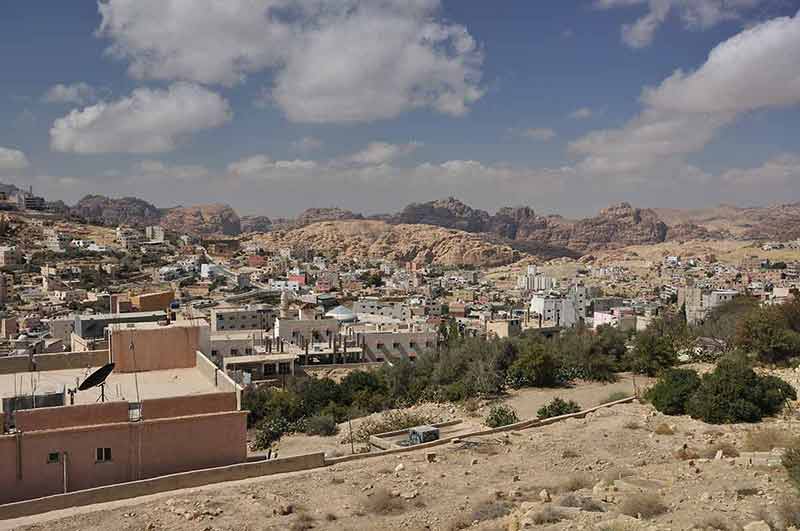
The small town of Wadi Musa is the gateway to Petra, and its existence is purely because of its popularity of Petra. It is a destination on the “bucket list” of many travellers. Tours from both Aqaba and Amman offer the chance to visit Petra and the Dead Sea, a sea with shores in both Israel and Jordan and Wadi Rum, a stunning valley and desert region.
Jordan’s monarchy has been able to hold the country together. Jordan had been formally at war since the establishment of Israel and had suffered. King Hussein and the Israeli Foreign Minister at the time, Shimon Peres, had been talking about peace for some time before the announcement of a peace treaty in 1994. Travellers can expect a warm welcome here and elsewhere in the cities of Jordan, especially because it is at peace with its neighbour.
Contents
Cities in Jordan
20 Jordan Cities To Visit
1- Amman
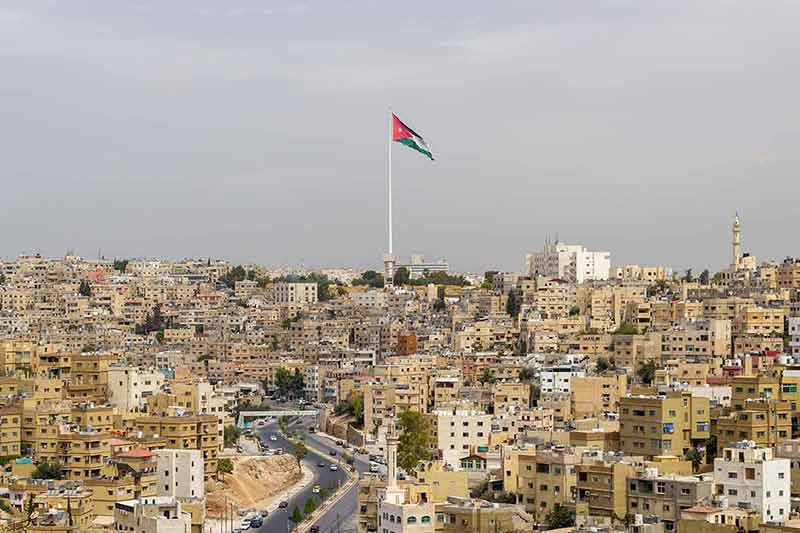
Amman itself has a population of over a million.
Its origins date back to ancient times, and its importance to Jordan, both culturally and economically, should not be underestimated.
It was a trading centre from its early days and its recent growth has put pressure on its infrastructure.
However, it is an important tourist destination in itself, with significant historical and cultural ruins as well as museums that provide an insight into the region and its past.
The Citadel and Roman Theatre are notable landmarks, while King Abdullah I, King Hussein and Abu Darwish Mosques should be on most visitors’ itineraries.
Fine dining and street food are there to try with accommodation to suit every budget readily available.
Top Tours
- From Amman: Petra, Wadi Rum and Dead Sea – 2-Day tour
- From Amman: Jerash, Ajloun Castle or Umm Qais – an excellent private tour
- From Amman: Dead Sea and Madaba Tour – with hotel pickup
2- Zarqa
Zarqa is a city in Jordan built by the Chechen at the beginning of the last century when a newly-built railway station ensured its importance.
It was both residential and had a military function before becoming the heart of Jordan’s industrial area.
The city lies a short distance northeast of Amman and has a significant Palestinian population that dates back to the years just after the Second World War.
The relatively low cost of land relative to Amman was the reason for its industrial growth, and today it houses around 50% of Jordan’s factories.
Leather and garments top the list of products leaving Zarqa, while other industries include pharmaceuticals, chemicals and agricultural produce.
3- Irbid
Irbid is a large city that grew out of the settlement of Arabella and is famous for its fine wines.
The production of olive oil is also very important to this large city on the road to the Syrian border in the north.
This is one of the most fertile regions of Jordan which, of course, is semi-arid.
The Yarmuk River and a plethora of springs provide the water for agriculture.
Citrus fruits are important while this is also an area for livestock, grain and honey.
There are several architectural gems locally, while the city is also an educational centre.
While in Irbid, it is also worth checking its museums.
4- Russeifa
Russeifa is another northern city close to Amman.
Its importance began with phosphate mining back in the 30s.
The main industrial region of Jordan, centred on nearby Zarqa, ensures that Russeifa will continue to provide employment opportunities for the large local population.
The city is the fourth largest by population in Jordan, a figure in excess of 450,000, with Zarqa and Amman both close enough to provide employment opportunities.
5- Wadi As Seir
Wadi As Seir, just west of Amman, is worth considering if you are looking for somewhere to go shopping.
Here you will find Western fashion stores in high-end malls with multiplex cinemas and food courts.
The dining scene offers quality global restaurants and places to eat a local favourite, shawarma.
The contemporary Abu-Eisheh Mosque is most impressive; the prayer hall has enormous chandeliers.
Another place to visit with its life-size stone lions is the impressive ruins of the Qasr Al-Abed Palace which dates back to the 2nd Century BC and the Ancient Greeks.
- 21 Incredible Landmarks in Egypt
- 20 Things To Do In Dubai
- 20 Beaches in Dubai
- 20 Things To Do In Oman
- 8 Things To Do In Jordan With Kids
- 7 Places To Visit In Egypt
- Green Planet Dubai
- Dubai Desert Safari
- 20 Cities in Jordan
- 20 Landmarks in Jordan
- 20 Things To Do In Amman
- 20 Things To Do In Beirut
- 20 Cities in Yemen
6- Aljoun
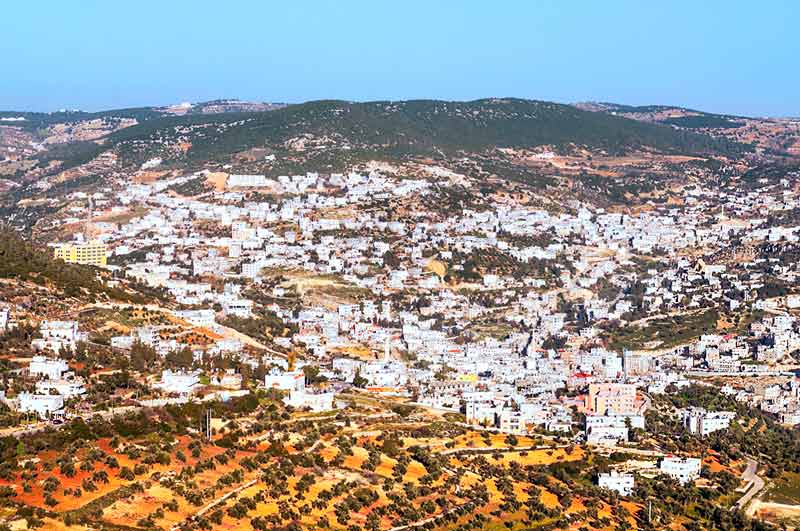
Ajloun in the fertile highlands in the north of Jordan, sits below the ruined Ajloun Castle, built in the late 12th Century to provide defence against the Crusaders.
The Ajloun Archaeological Museum has exhibits including ancient Neolithic artifacts found locally.
If you take the Ajloun Castle Trail as it winds northwards, you will come to the ruined Church of Mar Elias on the hilltop.
Continuing on, the trail goes through orchards and oaks to the Ajloun Forest Reserve.
7- Aqaba
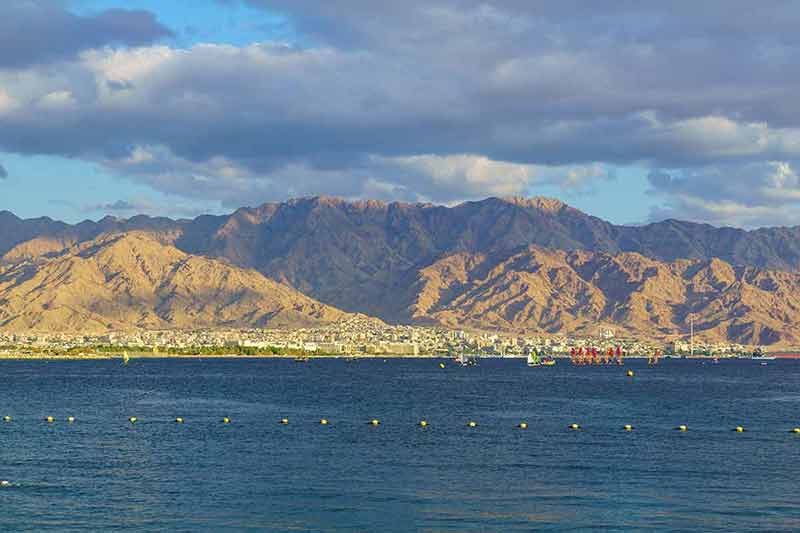
Aqaba is Jordan’s only coastal city.
It sits on the Red Sea, shoulder to shoulder with Eilat in Israel.
Saudi Arabia lies to its east, with Egypt just a short distance southwest across the Gulf.
It is an important tourist destination as well as important for trade.
It is trade that resulted in its initial settlement thousands of years ago.
Copper was mined here all those years ago with Islam replacing the Christian Byzantines in the 7th Century.
Today, it is a duty-free city attracting many tourists interested in the city itself, the warm waters and the chance to head inland to Petra, the Dead Sea and Wadi Rum.
Top tour: From Aqaba: Petra 1-Day Tour.
8- Rukban
This remote city is in an arid region in the northeast, close to both the borders with both Syria and Iraq.
The establishment of a refugee camp in 2014 saw it grow significantly.
It is in a demilitarised district, 55 kilometres (36 miles) wide, separating Jordan from Syria.
Some estimates put the numbers living in the camp at one time at 70,000 and they were seen as a security problem for Jordan.
Those numbers have dwindled significantly but Rukban remains a deprived place with access to food and medical supplies a serious issue.
9- Madaba
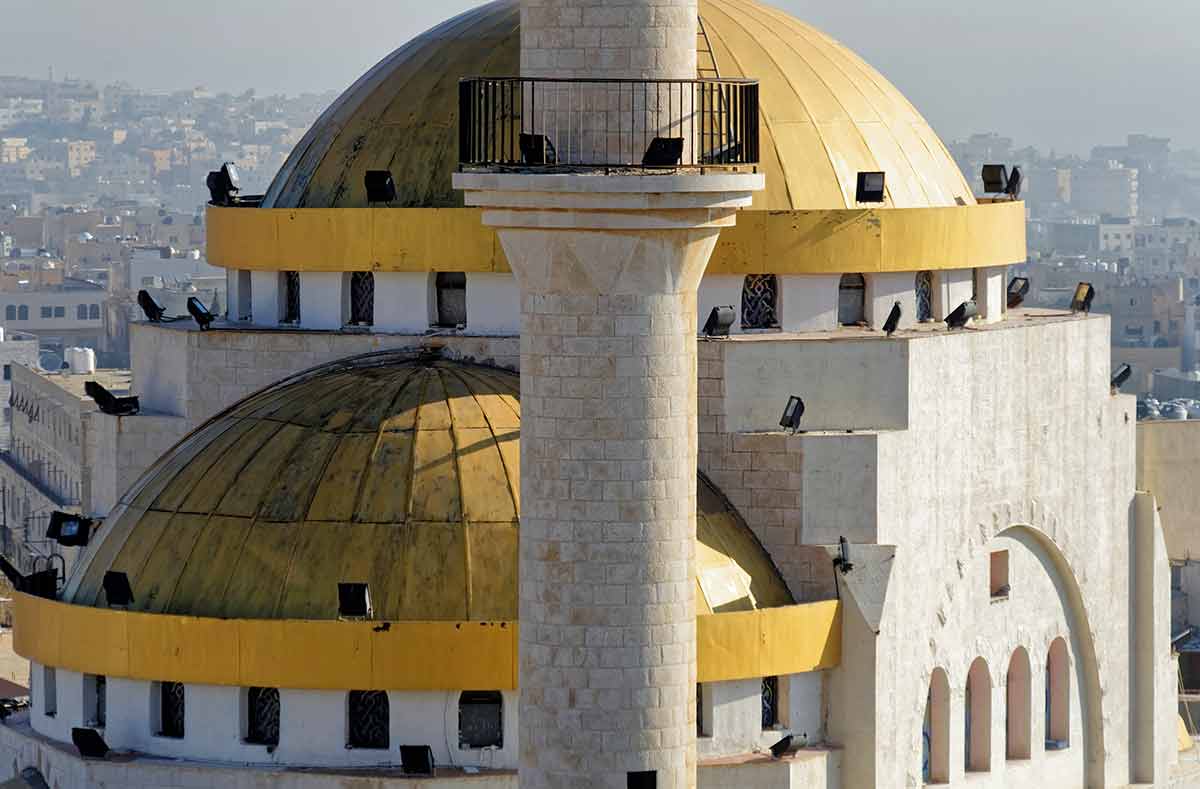
Madaba, southwest of the capital Amman is famous for its 6th-century mosaic map of the Holy Land in the Greek Orthodox Church of St. George.
The mosaic-rich Church of the Virgin Mary and artifacts from the Hellenistic, Roman, Byzantine and Islamic times are displayed in the Madaba Archaeological Park.
The Park was opened to the public in 1995 and many visitors have been there.
Head to the northwest and reach Mount Nebo, a biblical hill overlooking the Jordan Valley and the Dead Sea.
Madaba has a significant Christian minority and the city should be one of the first to consider visiting after the better-known Petra and Jerash.
10- As Salt
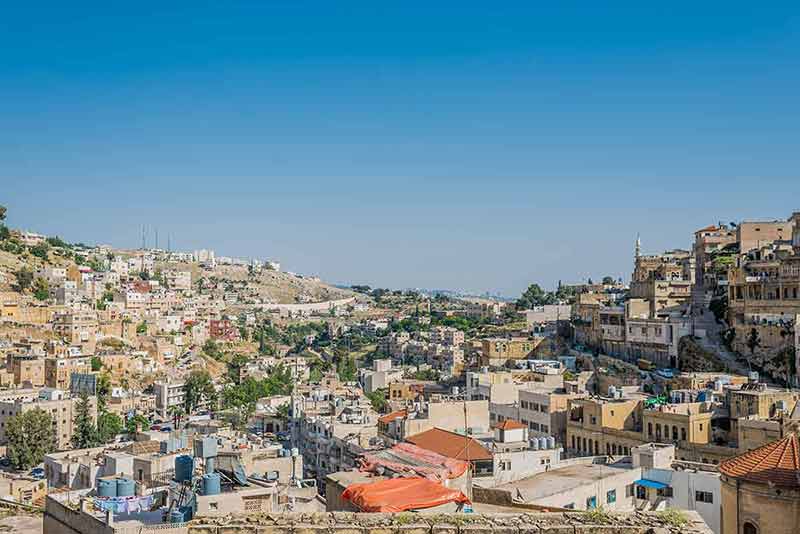
The main reason to visit As Salt, close to Amman, is to see the architecture typical of the Ottomans, whose empire included this area for many centuries.
The Abu Jaber Mansion, now the Historic Old Salt Museum, is only a century old.
The Italian frescoed ceilings are its most impressive feature.
A typical Ottoman Mosque looks down on Hammam Street, where you will find the food market.
The Archaeological Museum in As Salt has exhibits that range from the Chalcolithic Era between 4500 and 3300 B.C. to the 16th Century.
As Salt has been built on a hillside and has existed as a trading community for centuries.
11- Ar Ramtha
Ar-Ramtha, in the far northwest of Jordan, is close to the border with Syria beyond the Jordan River and Irbid.
It existed during Roman and Byzantine times, with historians claiming it was the ancient city of Ramoth-Gilead, Hebrew for “Heights of Gilead”.
Today’s population numbers around 165,000 and has been growing of late.
A census 60 years ago recorded just 10,000 inhabitants, and it has been the problem with Syria that has seen that dramatic growth in the last decade.
Its trading activities have been curtailed by those problems but there is the prospect of oil which would certainly boost the economy.
12- Mafraq
Today, half of the population of Mafraq, which lies 80 kilometres (50 miles) north of Amman, are Syrian refugees.
The city itself dates back to the 4th Century BC when the Nabataeans occupied the region.
The town of Umm el-Jimal, built in the 1st Century, both Nabataean and Byzantine, is nearby.
Just over a century ago, the rail line between Istanbul and Medina passed through here.
A military base and airport were controlled by the British around then.
Its military significance remains today; the HQ of the Third Division of the Jordanian Army, King Hussein Air College and the Royal Jordanian Air Force are in the city.
13- Ma’an
Ma’an in down in southwest Jordan, over 200 kilometres (125 miles) from Amman, has a population of around 40,000.
It dates back before the times of the Nabataeans with the ruins just outside the current city.
It was an important settlement where Minean traders from the Yemen lived and worked between the 2nd and 4th Centuries BC.
It converted to Islam from Christianity in the 7th Century.
Although part of the Ottoman Empire, Ma’an was remote although it lay on the line between Damascus and Medina towards the end of Ottoman “rule.”
Its current highway links are excellent, situated on the modern Desert Highway.
14- Al Jubayhah
Al-Jubeiha in the Greater Amman Municipality is home to Rujm el-Jebeha, an archaeological site where you will find the remains of an Ammonite fortified tower.
It is thought it was the site of a biblical settlement, Jogbehah, and the city has kept the ancient name.
The city is an important educational location and includes a section of the University of Jordan, the Royal Scientific Society (including the German-Jordanian University and the Princess Sumaya University for Technology), and the Ministry of Higher Education and Scientific Research.
15- Havv al Quwaysimah
Al-Quwaysimah is another city within the Greater Amman Municipality, with a population exceeding 175,000, making it the fifth largest by population in the country.
That contrasts with the Ottoman census done in the early 20th century, which recorded 101 people, all Muslim.
It is an option for travellers who prefer not to be in the heart of Amman, with budget travellers certainly well catered for.
Its proximity to Amman means that many who live here work in the nearby capital, commuting the short distance each day.
16- Jerash
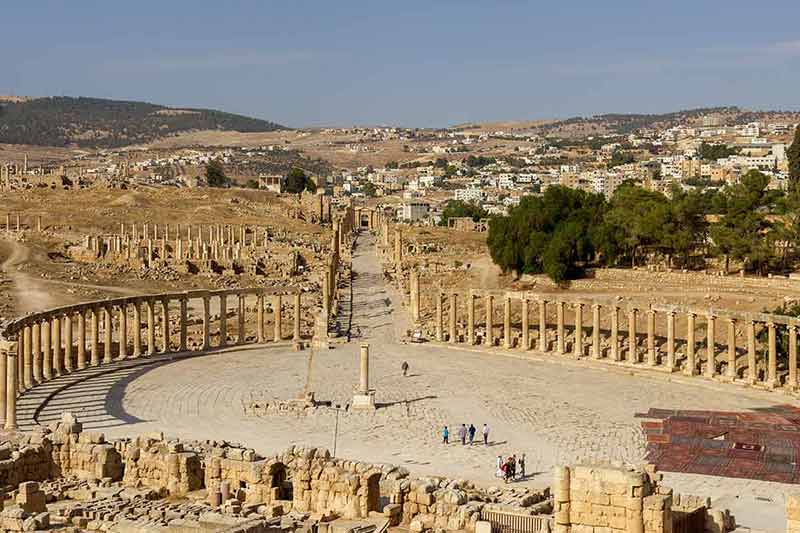
Under an hour north of Amman is the city of Jerash, a modern city of 50,000 known primarily for the impressive remains of a Roman city.
The entrance to the ancient ruins is the hugely impressive Hadrian Arch, followed by a road leading to several notable ruins.
The Roman name was Gerasa, incidentally.
Other highlights are the Temple of Artemis, its Corinthian columns, and the Forum.
The Jerash Archaeological Museum has several artifacts taken from the site.
Arguably, this is the best preserved Ancient Roman city outside Italy, with only one large earthquake causing damage over the centuries.
17- Suwaylih
Suwaylih is another city founded by the Chechen early in the 20th century when the Ottomans still ruled the region.
Agriculture immediately became a major pastime.
It lies north of Amman and has a significant population of around 150,000.
It is located at an altitude where it often gets snow in the winter, yet its overall climate is mild.
Suwaylih is known for its olives and grapes but also for the heavy engineering industry, including automobile assembly.
The University of Jordan attracts a significant number of students.
18- Sahab
Sahab is 16 kilometres (approximately 10 miles) southeast of Amman.
The modern city originated as a Bedouin-owned village in the late 19th century under the rule of the Ottomans.
There was a plantation where Egyptian migrants lived and worked.
Today, it is an important industrial region with a population of around 170,000, including the Abdullah II Ibn Al-Hussein Industrial Estate.
Here you will find the largest cemetery in the whole of Jordan and the Caves of Raqeem, which were mentioned in the Qur’an (Surat al-Kahf).
19- Ain Al-Basha
Ain Al-Basha, northwest of Amman on Highway 55, which heads initially to Jerash, was home to the biggest Palestinian refugee camp in Jordan, set up after the 1967 Arab-Israeli War.
Today’s population approaches 70,000 and it has good educational facilities as a notable feature.
The Philadelphia University stands by the Highway, while the Applied Science Private University is nearby.
The name “Basha” is the Arabic pronunciation of Pasha, a name given by the Ottomans, and the city gets this name because Ibrahim Pasha was said to have gone to a well (ain) when passing through the area.
20- Beit Ras
You will find what remains of the ancient Greek City of Capitolias in what is now Beit Ras.
Sadly, there is little to see besides the theatre, although excavations are still ongoing, albeit slowly.
One of the recent finds is a Roman tomb dated from the early centuries AD.
It was unearthed by accident by a mechanical shovel undertaking roadworks.
The shovel revealed lovely wall paintings of everyday life in those times.
Pliny the Elder mentioned the city in his writings about the Decapolis, a group of 10 old Greek cities on the extreme east of the Roman Empire.
Bit Ras is in the Governate of Irbid in the north of Jordan.
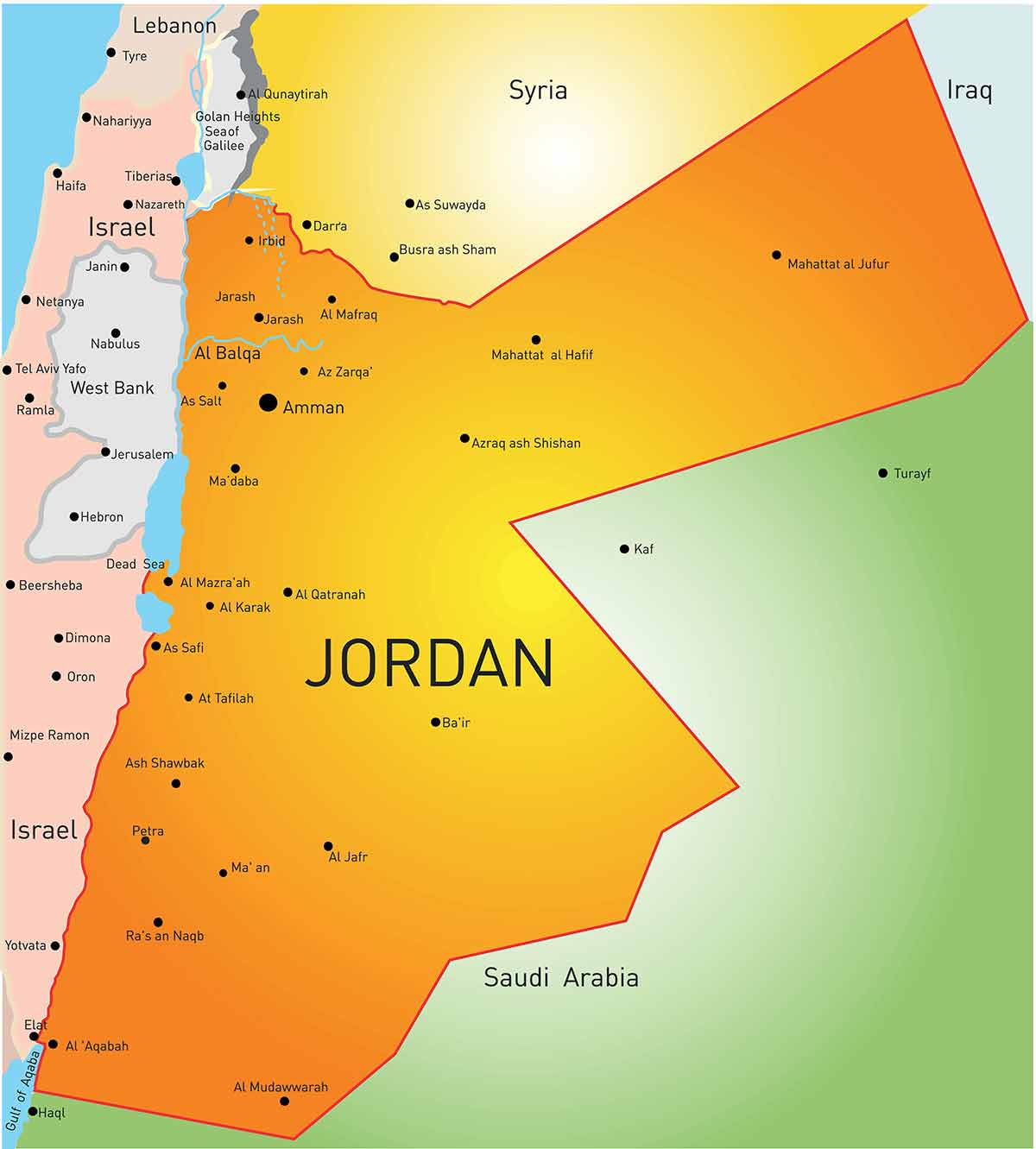
For more incredible cities around the world, read:
- 20 Best Cities at Night
- 20 Best Cities in Mexico
- 20 Best Cities in Greece
- 20 Best Cities in Poland
- 20 Best Cities in Spain
- 20 Best Cities in Portugal
- 20 Best Cities in Ohio
- 20 Best Cities in Missouri
- 20 Best Cities in Indiana
- 20 Best Cities in Texas
- 20 Best Cities in Florida
- 20 Best Cities in Iowa
- 20 Best Cities in Illinois
- 20 Best Cities in Wyoming
- 20 Best Cities in Tennessee
- 20 Best Cities in Nevada
- 20 Best Cities in Alabama
- 20 Best Cities in Oklahoma
- 20 Best Cities in Idaho
- 20 Best Cities in New Mexico
- 20 Best Cities in Georgia
- 20 Best Cities in North Carolina
- 20 Best Cities in Vietnam
- 20 Best Danube River Cities
- 10 Best Party Cities in Canada
- 10 Best Cities in Canada For Kids
- 20 Best Cities in Hawaii
- 20 Best Cities in Romania
- 20 Best Cities in Finland
- 20 Best Cities in France
- 20 Best Cities in Taiwan
- 20 Best Cities in Turkey
- 20 Best Cities in Scotland
- 20 Best Cities in New York
- 20 Best Cities in England
- 20 Best Cities in Switzerland
- 20 Best Cities in New Zealand
- 20 Best Cities in Iceland
- 20 Best Cities in Netherlands
- 20 Best Cities in Belgium
- 20 Best Cities in Jordan
- 20 Best Cities in Italy
- 20 Best Cities in Ireland
- 20 Best Cities in Germany
- 20 Best Cities in Brazil
- 20 Best Cities in Armenia
Plan Your Trip

Rent A Car – Find the best car rental rates at Discover Cars. They compare car hire companies to provide you with the best deal right now.

Find A Hotel – If you’re curious about this article and are looking for somewhere to stay, take a look at these amazing hotels.

